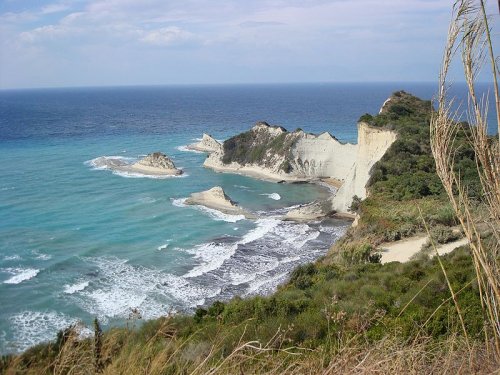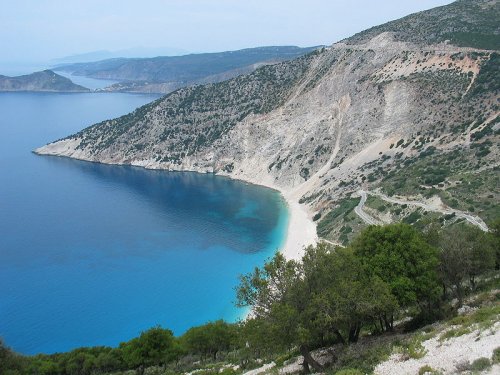 Myrtos Beach, Kefalonia, Greece
Myrtos Beach, Kefalonia, GreeceSource: https://commons.wikimedia.org/wiki/File:Kephalonia_089.JPG
Author: Splendid entry

Ionian Islands is a group of islands in Greece. In Greek, the islands are called Heptanese, or Ἑπτάνησα, meaning "Seven islands", because there are of course seven of them: Corfu (Κέρκυρα, Kerkyr), Paxos (Παξοί, Paxi), Lefkas (Λευκάδα, Lefkada), Ithaca ((Ιθάκη, Ithaki), Kefallonia (Κεφαλλονιά), Zante (Ζάκυνθος, Zakynthos) and Cerigo (Κύθηρα, Kythira). Six of these seven are located in a stretch along the west coast of Greece, while Cerigo is off the southern tip of Peloponnese.
Towns in the Ionian Islands
 Cape Fonias, Corfu
Cape Fonias, CorfuSource: https://commons.wikimedia.org/wiki/File:Cape_Fonias,_Corfu_1.JPG
Author: Georgios Pazios
The Ionian Islands have been inhabited since 1,200 BC. The earliest inhabitants were believed to be Eretrians. Later they were replaced by Corinthians in around 734 BC. By the 4th century BC, they were ruled by the Kingdom of Macedonia until 146 BC, when they passed into Roman control.
After four hundred years of Roman rule, the Ionian Islands fell under the rule of the Byzantine Empire. From the 13th century, the Republic of Venice began to exert its rule over the Ionian Islands, beginning with Corfu until eventually all were under Venetian rule. They remain under Venetian rule even as the rest of Greece fell under Ottoman rule.
 Kefalonia coast in the Ionian Islands, Greece
Kefalonia coast in the Ionian Islands, GreeceSource: https://commons.wikimedia.org/wiki/File:Kust_van_Kefalonia.JPG
Author: Henkgron

By the 18th century, the Ionian Islands became the base for nationalists seeking Greek independence. However, before independence could be tasted, the island came under French rule when Napoléon Bonaparte conquered Venice in 1797. The defeat of the French fleet by the British in Zakynthos in 1809 led to British rule of Zakynthos, Kafallonia, Kythera and later Lefkada. Following Greek independence in 1830, the islands were pressing for independence as well. This led to the Ionian Islands being added into the Kingdom of Greece in 1864.
 Latest updates on Penang Travel Tips
Latest updates on Penang Travel Tips

Copyright © 2003-2025 Timothy Tye. All Rights Reserved.

 Go Back
Go Back